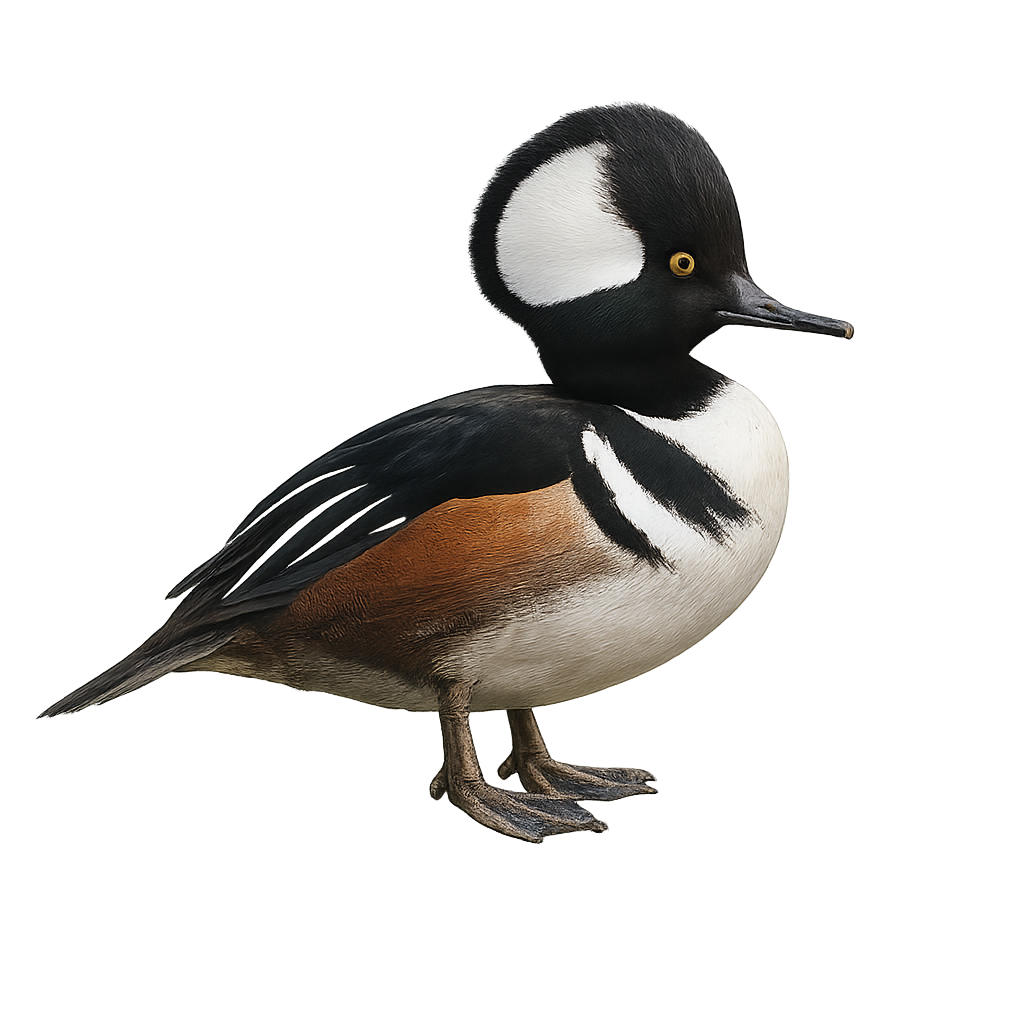Your wildlife photography guide.
Explore the hooded merganser in detail, study its behavior, prepare your shots.
Where to observe and photograph the hooded merganser in the wild
Learn where and when to spot the hooded merganser in the wild, how to identify the species based on distinctive features, and what natural environments it inhabits. The WildlifePhotographer app offers tailored photography tips that reflect the hooded merganser’s behavior, helping you capture better wildlife images. Explore the full species profile for key information including description, habitat, active periods, and approach techniques.
Hooded merganser
Scientific name: Lophodytes cucullatus

IUCN Status: Least Concern
Family: ANATIDAE
Group: Birds
Sensitivity to human approach: Suspicious
Minimum approach distance: 30 m
Courtship display: March to April
Incubation: 29–37 jours
Hatchings: April to May
Habitat:
Wetlands, lakes, ponds, forested rivers, and marshes in North America, especially in the USA and Canada
Activity period :
Primarily active during the day, with peak activity in the morning and late afternoon.
Identification and description:
The Hooded Merganser is a medium-sized duck, easily recognizable by its distinctive crest and vibrant colors. It measures about 40 to 50 cm in length, with a wingspan of 60 to 70 cm, and weighs between 400 and 700 g. The male, during the breeding season, has a black and white head with an impressive crest of white feathers on top. Its plumage is mainly black and white, with shades of brown and green, and it has a short, wide beak adapted for feeding on fish, crustaceans, and aquatic invertebrates. The female, on the other hand, is more subtle, with light brown plumage and a less prominent crest. The Hooded Merganser primarily inhabits North America, particularly in the northeastern United States, where it frequents lakes, rivers, and wetland areas. It is an excellent diver, capable of diving underwater to capture its prey. Although the species is not in immediate danger, it is vulnerable to habitat loss and water pollution.
Recommended lens:
300 mm – adjust based on distance, desired framing (portrait or habitat), and approach conditions.
Photography tips:
Use a telephoto lens to photograph the hooded merganser, especially when it swims or dives in ponds.
Soft morning or evening light is ideal for capturing its vivid colors and natural behaviors.
Be discreet and respect their space to avoid disturbing their natural behavior, especially during the breeding season.
The WildlifePhotographer App is coming soon!
Be the first to explore the best nature spots, track rutting seasons, log your observations, and observe more wildlife.
Already 1 432 wildlife lovers subscribed worldwide

